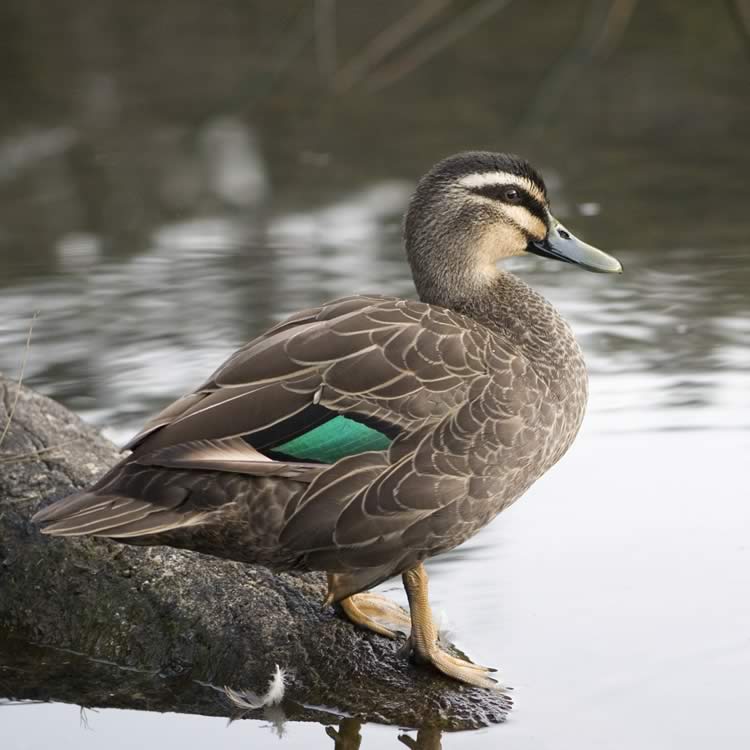Pacific black duck

Community type
Habitat type
Tidal wetlands and macrophytes beds
The Pacific black duck is common throughout Australasia and the south-west Pacific, found in many habitats from freshwater to saline wetlands. It is easy to identify thanks to its mottled or striated light and dark brown plumage, and dark brown line through its eye.
Closely related to the introduced mallard duck, they share nesting habits and commonly interbreed. The Pacific black duck is mainly vegetarian, feeding off seeds of aquatic plants, though it will also eat small crustaceans and aquatic insects. They feed by either ‘dabbling’ at food on the surface of the water, or ‘bobbing’ – head under and rear end in air – to reach food underwater.
In a good year breeding females can rear two clutches of chicks, and lay 16–32 eggs. But survival of chicks is low due to wetland predators such as feral cats, native quolls, water rats and tiger snakes. Chestnut teal and mallard are also highly abundant in the Derwent Estuary wetlands. A number of other native species are less abundant, but are still regularly seen in Derwent Estuary wetlands, such as the Australasian shoveler, blue-billed duck, musk duck and grey teal.
